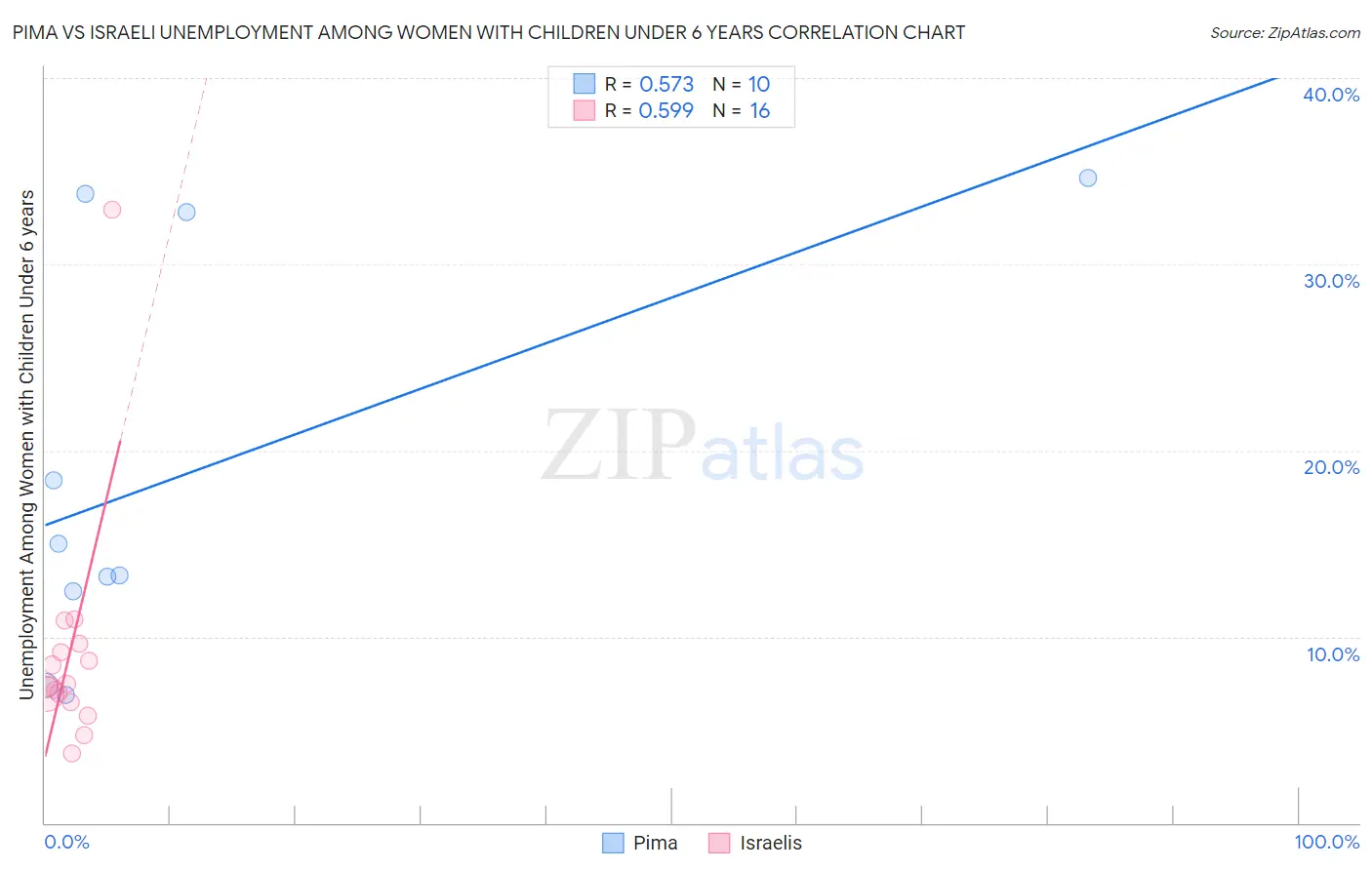Pima vs Israeli Unemployment Among Women with Children Under 6 years
COMPARE
Pima
Israeli
Unemployment Among Women with Children Under 6 years
Unemployment Among Women with Children Under 6 years Comparison
Pima
Israelis
13.4%
UNEMPLOYMENT AMONG WOMEN WITH CHILDREN UNDER 6 YEARS
0.0/ 100
METRIC RATING
338th/ 347
METRIC RANK
7.2%
UNEMPLOYMENT AMONG WOMEN WITH CHILDREN UNDER 6 YEARS
96.5/ 100
METRIC RATING
112th/ 347
METRIC RANK
Pima vs Israeli Unemployment Among Women with Children Under 6 years Correlation Chart
The statistical analysis conducted on geographies consisting of 58,117,266 people shows a substantial positive correlation between the proportion of Pima and unemployment rate among women with children under the age of 6 in the United States with a correlation coefficient (R) of 0.573 and weighted average of 13.4%. Similarly, the statistical analysis conducted on geographies consisting of 176,996,963 people shows a substantial positive correlation between the proportion of Israelis and unemployment rate among women with children under the age of 6 in the United States with a correlation coefficient (R) of 0.599 and weighted average of 7.2%, a difference of 86.0%.

Unemployment Among Women with Children Under 6 years Correlation Summary
| Measurement | Pima | Israeli |
| Minimum | 6.9% | 3.8% |
| Maximum | 34.6% | 32.9% |
| Range | 27.7% | 29.1% |
| Mean | 18.8% | 9.2% |
| Median | 14.2% | 7.4% |
| Interquartile 25% (IQ1) | 12.4% | 6.7% |
| Interquartile 75% (IQ3) | 32.8% | 9.4% |
| Interquartile Range (IQR) | 20.4% | 2.7% |
| Standard Deviation (Sample) | 10.8% | 6.6% |
| Standard Deviation (Population) | 10.3% | 6.4% |
Similar Demographics by Unemployment Among Women with Children Under 6 years
Demographics Similar to Pima by Unemployment Among Women with Children Under 6 years
In terms of unemployment among women with children under 6 years, the demographic groups most similar to Pima are Navajo (13.5%, a difference of 0.40%), Immigrants from Yemen (13.5%, a difference of 0.40%), Chippewa (13.3%, a difference of 0.79%), Shoshone (13.2%, a difference of 1.9%), and Lumbee (13.8%, a difference of 2.6%).
| Demographics | Rating | Rank | Unemployment Among Women with Children Under 6 years |
| Colville | 0.0 /100 | #331 | Tragic 11.2% |
| Sioux | 0.0 /100 | #332 | Tragic 11.5% |
| Natives/Alaskans | 0.0 /100 | #333 | Tragic 11.5% |
| Apache | 0.0 /100 | #334 | Tragic 12.3% |
| Puerto Ricans | 0.0 /100 | #335 | Tragic 12.5% |
| Shoshone | 0.0 /100 | #336 | Tragic 13.2% |
| Chippewa | 0.0 /100 | #337 | Tragic 13.3% |
| Pima | 0.0 /100 | #338 | Tragic 13.4% |
| Navajo | 0.0 /100 | #339 | Tragic 13.5% |
| Immigrants | Yemen | 0.0 /100 | #340 | Tragic 13.5% |
| Lumbee | 0.0 /100 | #341 | Tragic 13.8% |
| Yuman | 0.0 /100 | #342 | Tragic 14.6% |
| Crow | 0.0 /100 | #343 | Tragic 14.6% |
| Hopi | 0.0 /100 | #344 | Tragic 16.8% |
| Inupiat | 0.0 /100 | #345 | Tragic 17.7% |
Demographics Similar to Israelis by Unemployment Among Women with Children Under 6 years
In terms of unemployment among women with children under 6 years, the demographic groups most similar to Israelis are Nicaraguan (7.2%, a difference of 0.080%), Norwegian (7.2%, a difference of 0.11%), Argentinean (7.2%, a difference of 0.12%), Palestinian (7.2%, a difference of 0.17%), and Immigrants from Italy (7.2%, a difference of 0.20%).
| Demographics | Rating | Rank | Unemployment Among Women with Children Under 6 years |
| Venezuelans | 97.2 /100 | #105 | Exceptional 7.2% |
| Immigrants | Pakistan | 97.2 /100 | #106 | Exceptional 7.2% |
| Immigrants | Kazakhstan | 97.1 /100 | #107 | Exceptional 7.2% |
| Eastern Europeans | 96.9 /100 | #108 | Exceptional 7.2% |
| Australians | 96.9 /100 | #109 | Exceptional 7.2% |
| Palestinians | 96.8 /100 | #110 | Exceptional 7.2% |
| Norwegians | 96.7 /100 | #111 | Exceptional 7.2% |
| Israelis | 96.5 /100 | #112 | Exceptional 7.2% |
| Nicaraguans | 96.3 /100 | #113 | Exceptional 7.2% |
| Argentineans | 96.2 /100 | #114 | Exceptional 7.2% |
| Immigrants | Italy | 96.1 /100 | #115 | Exceptional 7.2% |
| Armenians | 95.9 /100 | #116 | Exceptional 7.2% |
| Immigrants | Kenya | 95.4 /100 | #117 | Exceptional 7.3% |
| Serbians | 94.5 /100 | #118 | Exceptional 7.3% |
| South Africans | 94.1 /100 | #119 | Exceptional 7.3% |